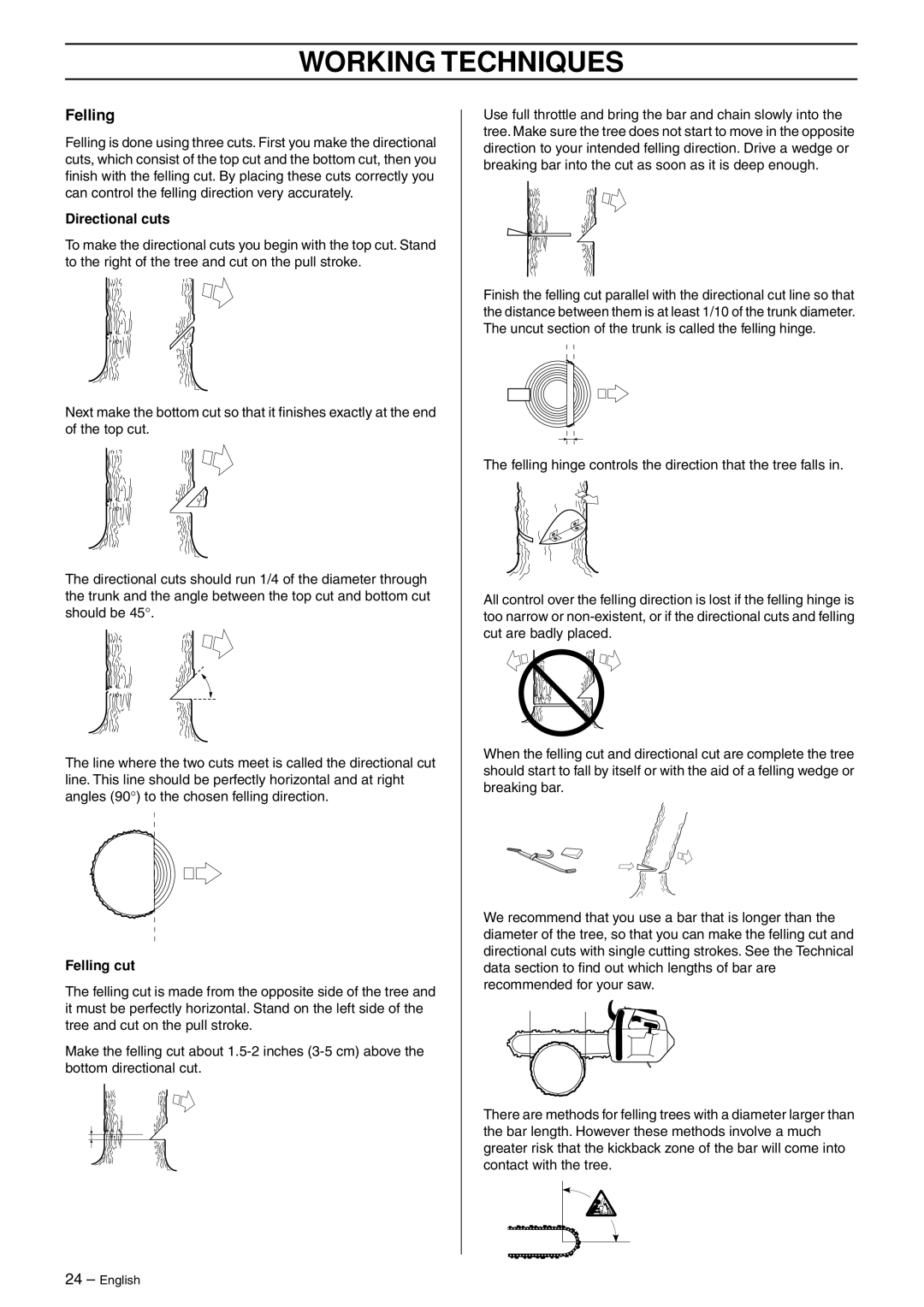CS 2135T specifications
The Jonsered CS 2135T is a highly regarded chainsaw designed for professionals and serious enthusiasts alike. Renowned for its robust performance and ergonomic design, the CS 2135T stands out in the competitive field of power tools.One of the main features of the Jonsered CS 2135T is its powerful engine. It is equipped with a 35cc two-stroke engine that delivers excellent power-to-weight ratio. This makes it particularly useful for tasks that require high performance, such as felling trees or cutting firewood. Additionally, the engine is designed with a reliable starting mechanism, ensuring that users can get to work quickly without frustration.
The CS 2135T also employs advanced technology to enhance its efficiency and ease of use. One notable technology is the Clean Power engine system, which reduces harmful emissions while improving fuel efficiency. This is particularly important for users who are conscious about environmental impact and want to minimize their carbon footprint while working.
Another key feature is the Air Injection centrifugal air cleaning system. This system reduces the amount of debris that enters the air filter, prolonging the lifespan of the filter and maintaining optimal engine performance. As a result, users can expect longer filter intervals, which translates to less maintenance work.
Ergonomics play a significant role in the design of the CS 2135T. The chainsaw is equipped with an anti-vibration system that minimizes vibrations felt by the user, making it more comfortable to operate over extended periods. The handles are designed for a secure grip, providing users with better control and reducing fatigue during use.
Safety is also a priority with the Jonsered CS 2135T. It features a chain brake that acts quickly to stop the chain in the event of kickback, protecting the operator from potential injuries. Additionally, the transparent fuel tank allows users to easily monitor fuel levels, preventing unexpected run-outs during work.
In summary, the Jonsered CS 2135T is a high-performance chainsaw that excels in power, efficiency, ergonomics, and safety. Its combination of advanced technologies, user-friendly features, and robust design makes it an excellent choice for anyone looking to tackle demanding cutting tasks with confidence. Whether you're a professional lumberjack or a homeowner looking for a reliable tool, the CS 2135T is built to deliver exceptional results.

